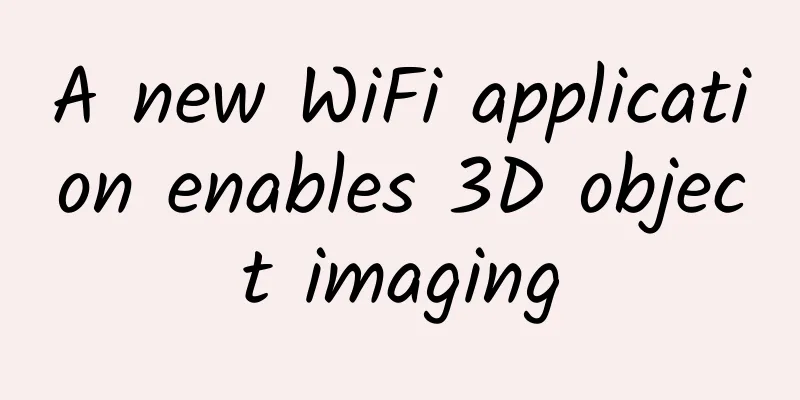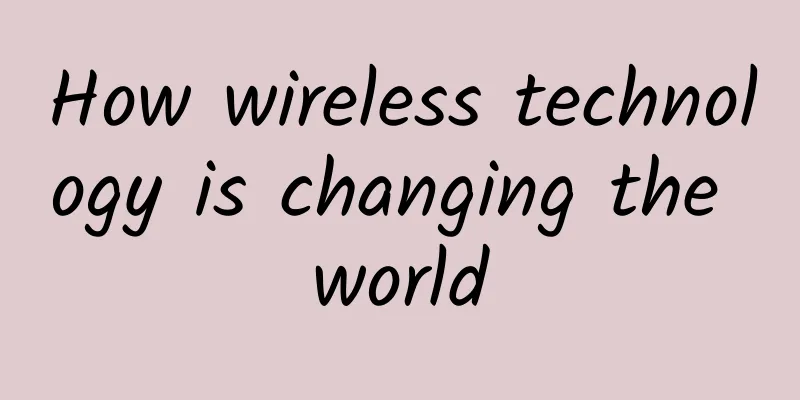A new WiFi application enables 3D object imaging

|
Scientists at the Technical University of Munich (TUM) have developed a new type of holographic imaging technology that depicts a three-dimensional image of the surroundings using radiation from a Wi-Fi transmitter. Industrial facility operators can use this feature to track objects as such signals pass through a production space. Like looking through a window, a hologram projects a seemingly three-dimensional image. While optical holograms require complex laser technology, generating a microwave hologram emitted by a Wi-Fi transmitter requires only one fixed antenna and one movable antenna, Dr. Friedenmann Reinhard and Dr. Philipp Holl describe the new technology in the renowned scientific journal Physical Review Letters.
"Using this technology, we can achieve a three-dimensional spatial image using Wi-Fi transmitters, just like our eyes can see microwave radiation," says Friedemann Reinhard, director of the Quantum Sensors Department at the Walter Schottky Institute at the Emmy Noether Research Group at LMU Munich. The deployment areas envisioned by the researchers are particularly difficult in some Industry 4.0 sectors, such as automated industrial facilities, where localized parts and equipment are often difficult. The technology already exists to allow localized microwave radiation, even through walls, to detect changes in signal patterns to detect the presence of a person. The innovation here is that the entire space can be processed holographically via Wi-Fi or cell phone signals. "Of course, this raises privacy issues. After all, even encrypted signals transmit images of the surroundings to the outside world to a certain extent," says project leader Friedemann Reinhard. "However, it is unlikely that this technology will be used to detect unfamiliar bedrooms or private spaces in the future. For this, you would need to place large antennas around the building, which would hardly go unnoticed. But there are simpler methods available." Centimeter-level resolution Until now, the use of microwave radiation to generate images has required special transmitters with large bandwidths. With holographic data processing, the small bandwidth of typical household Wi-Fi transmitters in the 2.4 and 5 GHz bands is sufficient for the researchers. Even Bluetooth and mobile phone signals can be used. The wavelength of these devices corresponds to a spatial resolution of a few centimeters. "Instead of measuring point by point with a moving antenna, you can use a much larger number of antennas to capture the frequency of the video image," says Philipp Holl, who conducted the experiments. "Future Wi-Fi frequencies such as the proposed 60 GHz IEEE 802.11 standard will allow resolution down to the millimeter range." Looking ahead Well-known optical methods for image processing can also be deployed for Wi-Fi holographic imaging: one example is the method used for dark-field microscopy, which improves the identification of weakly diffracting structures. Another process is white-light holography, where researchers exploit the small remaining bandwidth of Wi-Fi transmitters to eliminate noisy scattered radiation. The concept of processing microwave holograms like optical images enables the microwave image to be combined with the camera image. Additional information extracted from the microwave image can be embedded in the camera image of a smartphone, such as tracking a wireless tag attached to a lost item. But scientists feel the technology is in its infancy. For example, there is a lack of research into the transparency of specific materials. This knowledge could help develop paints or wallpapers that are semi-transparent for microwave privacy protection, while transparent materials could be deployed in factory halls to track parts. The researchers hope that further development of this technology will help reconstruct the location of victims under avalanches or collapsed buildings. While traditional methods can only point-locate victims, holographic signal processing can achieve a spatial representation of the destroyed structure, allowing emergency rescuers to avoid heavy objects in the ruins and use the ruins' spatial system to quickly and directly rescue victims. |
>>: Accelerating 5G standardization requires coping with the complexity of test scenarios
Recommend
What exactly is Spine-Leaf?
[[401509]] Today's story begins 67 years ago....
Maxthon Hosting 20% off, Hong Kong High Defense VPS monthly payment starts from 160 yuan, 20-50Gbps protection, dual IP
There are many merchants selling Hong Kong VPS, b...
ZJI: Hong Kong Kwai Wan cluster server is online, bandwidth upgraded to 2C segment 120 IP monthly payment from 1120 yuan/month
ZJI has newly launched the Hong Kong Kwai Wan Dat...
Megalayer: Starting from 24 yuan/month-1GB/50G SSD/10M CN2/San Jose & Hong Kong & Singapore data centers
Megalayer is a foreign hosting company registered...
Krypt September: Cloud Server $120/year, 2vCPU/2GB/60GB SSD/3TB, Support Windows/Linux, Los Angeles/San Jose
Krypt has released the September discount informa...
Interpretation of the 2017 Global Data Breach Cost Research Report
In early July, the 2017 Global Cost of Data Breac...
The 5G infrastructure market will reach $496.6 billion in 2027, with a CAGR of 106.4%.
According to a new study released by market resea...
spinservers new VPS host 50% off, $7/month-2GB/20G SSD/1TB/San Jose data center
spinservers launched a new VPS host product this ...
Mobile user development of the three major operators has reached a ceiling, and 5G messaging is steadily advancing, but challenges remain
[[348632]] Recently, the three major operators ha...
Experts interpret Huawei's "recipe" for smart cities: taking a rational, scientific and pragmatic approach
[51CTO.com original article] Not long ago, the 21...
Who will save the grassroots employees of operators who are almost unable to bear it?
The article "Come and see: Which of the thre...
Huawei OpenLab: An indispensable open cooperation platform for building an IT ecosystem
Normally, the labs we are talking about are labs ...
Improving operational efficiency of cloud NFV infrastructure
Mobile data traffic will grow more than 10 times ...
You can experience high-speed 5G network without 5G package, the three major operators confirmed, netizens are happy
Is this the norm for most people now? They hold 5...
What is the situation of my country’s Internet network security in 2017?
Recently, Yun Xiaochun, deputy director and chief...









